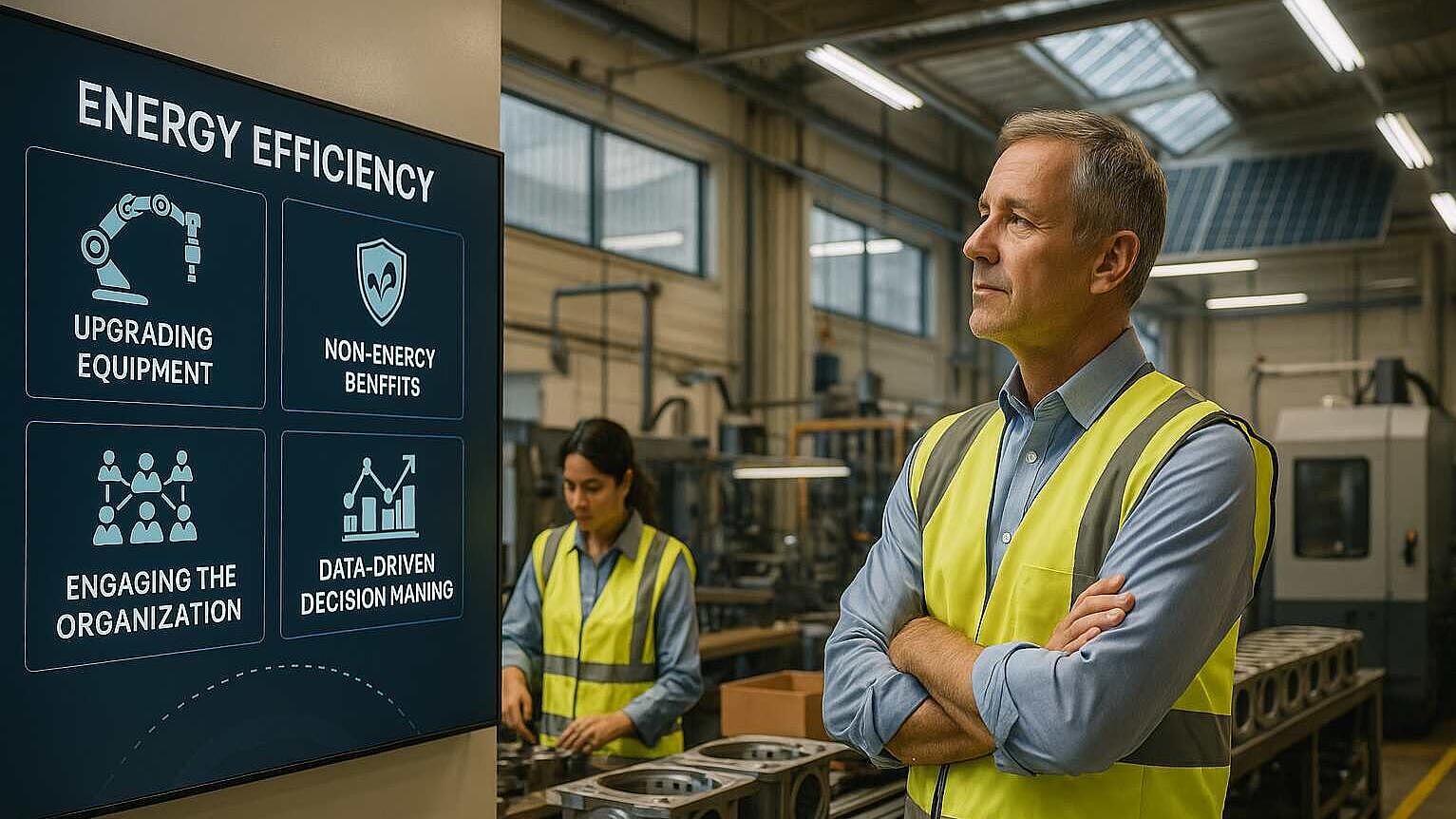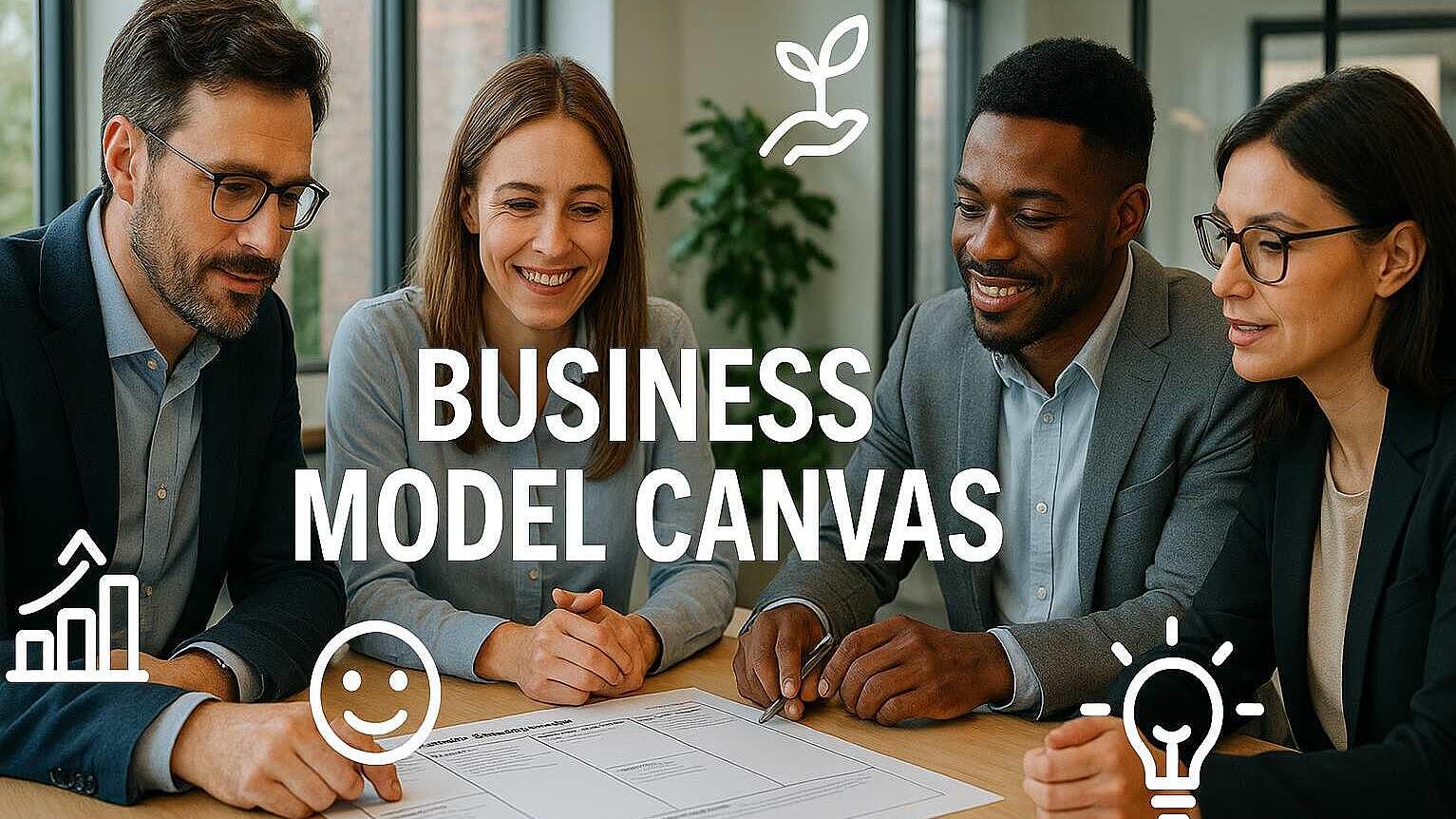 Energy Efficiency
Energy EfficiencyBeyond Energy Savings: How European SMEs Are Leading the Way with the Multiple Benefits Approach
Summary
The DEESME project, supported by the EU's Horizon 2020 program, has worked with SMEs across Europe, demonstrating that an integrated approach to energy management can lead to holistic business improvements beyond just energy savings. These improvements include innovation, increased resilience, employee well-being, and brand reputation enhancement. The project has established best practices through energy audits, which are the starting point for comprehensive upgrades, company-wide engagement, data-driven decisions, and building a culture of sustainability. Documented success stories from Italy, Bulgaria, Germany, and Poland illustrate the varied benefits, including reduced costs, improved product quality, safer workplaces, and the creation of new business opportunities.
Key factors for the success of the multiple benefits approach include accurate data collection, commitment from top management, communication of successes, expanding the scope of benefits consideration beyond direct energy savings, employee training and engagement, and treating energy efficiency as an ongoing journey. The project emphasizes the role of young professionals in championing energy management initiatives within organizations and highlights the EnerWhizz app as a tool for learning more about energy management. The overall message is that the strategic energy management approach can benefit all types of SMEs and is essential for building a sustainable and resilient European economy.
Open full article
Beyond Energy Savings: How European SMEs Are Leading the Way with the Multiple Benefits Approach
What if every step your company took toward energy efficiency unlocked not just lower utility bills, but also happier employees, more innovative products, and stronger business resilience? Across Europe, small and medium-sized enterprises (SMEs) are discovering that energy management is about more than saving kilowatt-hours—it's about driving holistic business transformation.
The DEESME project, funded by the EU’s Horizon 2020 program, has worked with SMEs in Italy, Bulgaria, Germany, and Poland to pioneer a new, integrated approach to energy audits and management. The result? A powerful set of best practices that demonstrate how SMEs of all types—industrial, service, family-owned—can achieve multiple, lasting benefits from their energy transition.
Rethinking Energy Efficiency: From Cost Center to Growth Driver
Traditionally, energy efficiency in SMEs was seen as a compliance task or a cost-cutting exercise. But under DEESME, companies learned to see it as a strategic tool for growth, resilience, and innovation.
Energy audits became the starting point—not the end—of a journey that includes:
- Upgrading equipment and processes
- Engaging the whole organization, from finance to marketing
- Setting up data-driven decision-making
- Building a culture of sustainability
Most importantly, companies realized that non-energy benefits—improved product quality, reduced waste, safer workplaces, and enhanced reputation—can often outweigh the financial gains from energy savings alone. For many, these benefits created new business opportunities and positioned them for long-term success.
Ten European Success Stories: What We Can Learn
The DEESME project documented ten best practice cases, spanning sectors from chemicals and fashion to printing, food, and digital media. Here are some highlights:
F.lli Rossetto (Italy) – Chemicals and Polyurethanes
Facing rising gas prices, F.lli Rossetto combined an energy audit with a multiple benefits analysis, leading to upgrades like a new heat pump and a revamp of their photovoltaic system. Not only did this cut energy costs, but it also revealed hidden cost centers, improved maintenance, and inspired a shift toward a company-wide culture of efficiency. Their advice? Don’t just look at the numbers—consider the broader impact on your business and people.
A Ltd. (Bulgaria) – Apparel and Footwear
This clothing manufacturer used energy audits and the multiple benefits approach to justify investing in new cutting and sewing machines. The result: lower energy and material costs, upcycled waste into new products, happier and more creative staff, and the ability to attract new, quality-focused customers. Energy efficiency can be the foundation for new value propositions and products.
Goldland Media (Germany) – Digital Media
Already a leader in office efficiency, Goldland Media embraced multiple benefits to enhance staff well-being, improve lighting, and support a broader sustainability mission. The improvements fostered innovation, increased competitiveness, and demonstrated that being sustainable is not just good for the planet—it’s good for business.
Anonymous-2 (Poland) – Ready-to-Eat Foods
This food processor combined energy audits with a business model overhaul: better water vapor management, upgraded lighting, and solar panels reduced waste and energy consumption, while new value propositions targeted health- and sustainability-conscious consumers. Sustainability now drives market strategy.
What Makes the Multiple Benefits Approach Work?
The DEESME experience revealed several key success factors for SMEs—and future leaders—to consider:
1. Complete and Accurate Data
Accurate, granular data on energy use, costs, and operational processes is critical. It enables companies to identify hidden inefficiencies, compare options, and measure the real impact of improvements. For example, installing new meters or energy management software can be a game-changer.
2. Top Management Commitment
Senior leaders must set clear goals, allocate resources, and visibly champion the energy transition. Their commitment signals that sustainability is a priority, not a side project, and encourages employees to get involved.
3. Celebrate and Communicate Success
Sharing positive outcomes—internally and with external stakeholders—boosts morale, supports a culture of improvement, and strengthens brand reputation. Case studies show that staff and customers alike respond to visible evidence of progress.
4. Quantify and Broaden the Benefits
Go beyond direct energy savings: consider impacts on maintenance, waste, staff safety, customer satisfaction, and even new business models. Sometimes, these “non-energy” benefits are what sway decision-makers and justify investment.
5. Training and Team Engagement
Empowering employees through training in energy efficiency and sustainability creates new champions and ensures initiatives are sustained. Including finance and marketing teams ensures that projects are feasible and their benefits are well communicated.
6. Treat Energy Efficiency as a Long-Term Journey
True transformation takes time—often months or years before the full results are visible. Continuous improvement, regular audits, and adaptation to new technologies or market conditions are essential.
The Road Ahead: Inspiration for Future Leaders
The DEESME best practices underline that energy management is everyone’s business. For students and young professionals, this field offers the chance to lead impactful projects, blend technical and business skills, and help companies build resilience for the future.
Whether you’re in engineering, IT, finance, or management, the key is to approach energy audits not as checklists, but as opportunities to drive value across the entire organization—environmental, economic, and social.
Ask yourself:
- How can I link energy efficiency to our company’s mission or customer promise?
- What non-obvious benefits might new equipment or processes unlock?
- How can I help my organization track and communicate its progress—inside and out?
Get Involved—And Test Your Knowledge!
Ready to step up your energy game? Play Enerwhizz, the multilingual, fast-paced quiz app where you can test your skills, compete in leagues, and earn rewards—all in just 45-second rounds. It’s a fun way to learn more about energy management and connect with a new generation of energy leaders!
Key Takeaways
- The multiple benefits approach transforms energy audits into engines of holistic business improvement.
- Success requires leadership, data, communication, and ongoing training.
- Every SME, regardless of sector or size, can benefit—if they make energy management a shared, strategic priority.
- Young professionals have a crucial role to play in building a smarter, greener, and more resilient European economy.
Sources & more…
More on Multiple Benefits: https://ieecp.org/wp-content/uploads/2024/09/D3.7_Best-Practices-final.pdf
More on D2050, the underlying EU project, check via “all EEIP projects”: https://projects.ee-ip.org/#ongoing-projects
More information on the EnerWhizz mobile quiz game, check: https://www.enerwhizz.info/



